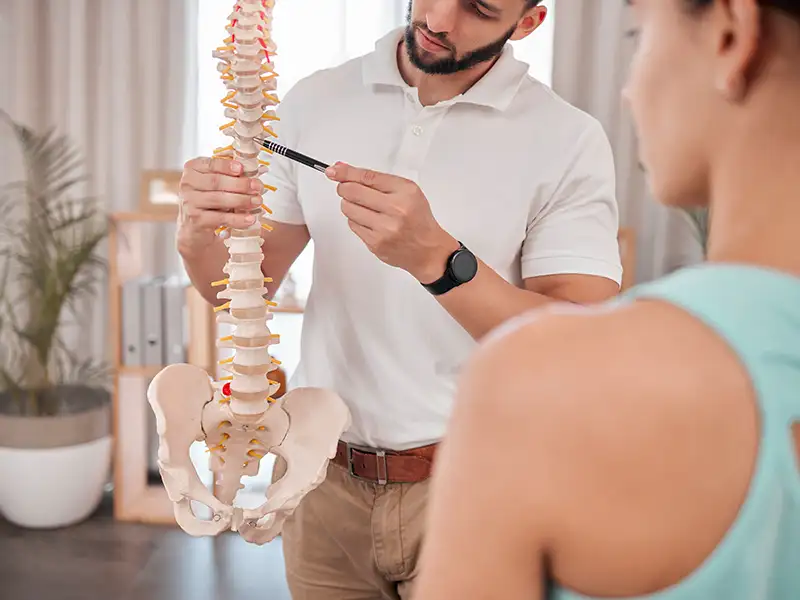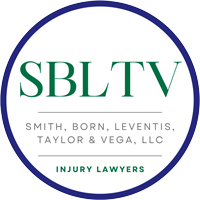
South Carolina Workers’ Compensation for Teachers
Learn about your right to workers’ comp benefits and how to file a claim after an injury teaching in Columbia
From potential slips and falls to repetitive stress injuries and even violence, Columbia teachers face significant hazards every time they walk into school. Despite the perception of teaching as a relatively safe profession, the reality is that injuries can and do occur, so it’s important to understand the types of benefits available and how to access them.
This article will provide you with an overview of the workers’ compensation system in South Carolina, but if you have additional questions or would like assistance with your claim, consider scheduling a free consultation with our knowledgeable Columbia workers’ compensation attorneys.
We’re here to simplify the process and help you get the compensation you deserve.
Is teaching considered a dangerous profession?
Between the recent COVID-19 pandemic and the rise in school shootings, teaching is indeed becoming an increasingly dangerous profession compared to years past.
So, how many teachers are injured each year in the U.S.?
Well, in 2021, the U.S. Bureau of Labor Statistics reported a significant number of work-related injuries and illnesses among teachers, totaling 176,200 in U.S. elementary and secondary schools. This figure marks a sharp 40.9% increase from 2020, although it remains 21.1% lower than the numbers from 2019.
Notably, of the 176,200 teacher injuries and illnesses in 2021, about 6,200 were respiratory illnesses, including cases of work-related COVID-19, highlighting the considerable risks that teachers continue to face post-pandemic.
What are some hazards of teaching?
Teaching can be a rewarding profession, but it’s not without its risks. Beyond the emotional demands, educators face a surprising number of hazards in the classroom.
Below are some of the most common:
- Slips, trips, and falls. Classrooms can be chaotic. Spilled drinks, scattered toys, or wet floors can all pose slip and fall hazards. Teachers are constantly on their feet, making them especially vulnerable to these types of accidents. These falls can result in anything from minor bumps and bruises to serious injuries like broken bones or head trauma.
- Ergonomic issues. Teachers spend a significant portion of their day standing, writing on boards, grading papers, and lifting heavy objects (books, supplies, projectors, etc.). Poor posture, repetitive motions, and awkward lifting techniques can lead to various musculoskeletal disorders (MSDs) like:
- Back pain. One of the most common complaints among teachers. Poor posture, lifting heavy objects, and long hours on their feet can all contribute to back strain and chronic pain.
- Carpal tunnel syndrome. Repetitive tasks like writing on the board, grading papers, and typing can cause this condition, affecting the nerves in the wrist and causing pain, numbness, and tingling in the hand and fingers.
- Tendonitis. This inflammation of the tendons can occur in the shoulders, elbows, or wrists due to repetitive motions like writing or using a mouse.
- Infectious disease. Schools are breeding grounds for germs. Teachers are constantly exposed to students who may be coughing, sneezing, or carrying various illnesses. This can increase the risk of contracting colds, flu, COVID-19, and other contagious diseases.
- Chemical and allergen exposure. Science teachers and art instructors, in particular, might be exposed to potentially hazardous chemicals and materials, such as glues, paints, and cleaning agents, which can cause respiratory issues, allergic reactions, or chemical burns.
- Workplace violence. While not as common as other hazards, teachers can unfortunately be victims of violence from students, parents, or other adults in the school environment. This can include physical assaults, verbal threats, or emotional abuse.
Generally speaking, the demands of teaching can be overwhelming. Large class sizes, standardized testing pressures, and limited resources can all lead to chronic stress and burnout among educators. While not a physical injury, this stress can manifest in physical symptoms like headaches, anxiety, and sleep problems, which can negatively contribute to an educator’s overall health.
Occupational Diseases in the Workplace
Learn how to prove an occupational disease or illness was caused by your job so you can get the compensation you deserve.
What benefits do SC teachers get after an injury?
In South Carolina, teachers who suffer a work-related injury, illness, or disease are entitled to several types of workers’ compensation benefits. These benefits include:
- Medical benefits. Workers’ compensation covers all necessary medical treatments related to the work injury or illness. This includes doctor visits, hospital stays, medications, surgeries, and any necessary medical equipment. The coverage also includes rehabilitation or physical therapy if needed and continues as long as treatment is deemed necessary by a medical professional.
- Vocational rehabilitation. If the injury prevents a teacher from returning to their previous educational duties, they may be eligible for vocational rehabilitation services. These services help an injured worker train for or transition to new employment within their physical limitations and capabilities.
- Wage loss benefits. If a teacher is unable to work due to their injury or illness, they can receive wage loss benefits. These benefits typically amount to two-thirds of their average weekly wage and are subject to minimum and maximum limits set by the state.
- Disability benefits. Depending on the severity and permanence of the injury, teachers may qualify for permanent disability benefits, which can be paid for up to 500 weeks.
- Death benefits. In the unfortunate event that a teacher dies due to a work-related injury or illness, their dependents may receive death benefits. These benefits include compensation for lost wages and can cover funeral and burial expenses up to a certain limit.
These comprehensive benefits ensure that teachers who are injured or fall ill due to their job receive the necessary support to recover or adapt to their new circumstances.
It’s important for injured teachers or their families to follow the correct procedures to claim these benefits, including seeking immediate medical treatment and reporting the injury or illness to their employer in writing within 90 days.
If challenges arise in securing these benefits or your claim is denied, you should consider consulting with a local workers’ compensation attorney to ensure your rights are protected.
Do I have to prove someone was at fault for my injury to get compensation?
No. In fact, in most cases, teachers can receive workers’ compensation benefits in South Carolina even if the injury was their fault. This is because workers’ compensation is a no-fault insurance system, which means that benefits are provided regardless of who was at fault for the injury, as long as it’s work-related.
The primary purpose of no-fault workers’ compensation insurance is to ensure that employees receive medical care and compensation for lost wages promptly, without the need for prolonged litigation over the cause of the injury.
This system simplifies the process for both the employee and the employer, as it eliminates the need to prove fault, which can often be complex and contentious.
However, to qualify for workers’ compensation benefits, an injury must be directly related to the employee’s job duties or work environment. This is often easier to prove with injuries that result from one-time accidents than with occupational injuries or diseases that develop over time, such as arthritis.
Proving that these more gradual injuries are work-related can be complex and may require the help of an attorney to gather substantial evidence, such as medical records and expert testimony, to link the condition to the work environment.
Get the help you deserve from an experienced Columbia work injury attorney
Are you having trouble getting the benefits you deserve after an injury in a South Carolina classroom?
The dedicated Columbia work injury attorneys at Smith, Born, Leventis, Taylor & Vega understand the unique challenges educators face. If you’ve been hurt due to a slip and fall, repetitive stress injury, exposure to illness, or even an incident of violence, we’re here to help.
Our knowledgeable team can help you gather evidence, connect you with medical experts, and negotiate with your employer’s insurer to help you get the benefits you need to support your recovery.
Contact our office today to schedule a free consultation to learn more about how we can maximize your claim.
References
A look at work injuries and illnesses in elementary and secondary schools : The Economics Daily: U.S. Bureau of Labor Statistics. (n.d.). www.bls.gov. https://www.bls.gov/opub/ted/2023/a-look-at-work-injuries-and-illnesses-in-elementary-and-secondary-schools.htm

